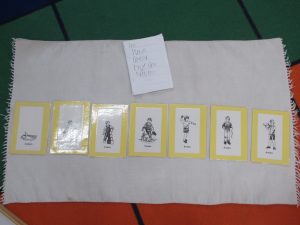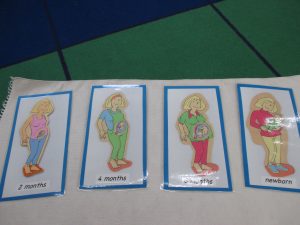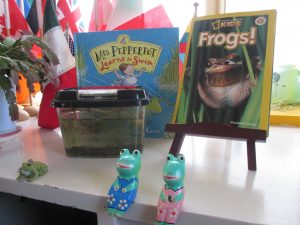With the season of Spring finally here in Japan and with many animals developing and being born during this season, our class has begun learning about life cycles. To help young children understand the concept, we firstly started with a ‘time-line of a human being.’ During our morning circle time we came together to observe how we start life as a newborn and then we grow into a one, two, three, four, five, six year olds and keep on developing through life’s milestones until we are an adult.
Of course young children have an increasing curiosity for babies. So we pulled out our life cycle puzzle of a mother expecting a baby to see how it grows inside a mother’s stomach. Keeping it simple to understand we started by looking at how big a baby at two months would be until the baby was fully formed as a newborn.
The children were then later encouraged to piece together the puzzle of the same life cycle which has been quite a popular activity each morning during our work cycles.
After learning about how a human being is formed, we moved onto the “Animal Kingdom’, which again is fascinating for a young child. We began by getting creative with some butterfly painting. A blob of paint here and there, a fold of paper and here we have our very own unique butterflies.
We all decided that our “Kindness Tree” could do with some butterflies. So we cut them out and pasted them all over the branches. Following on from the International Day theme of, “Kindness & Empathy”, the children have been looking for acts of kindness amongst each other. In a way to recognise each others acts the children have been encouraged to write on (with help when needed from the teachers) a flower cut out about how they felt kindness from one another.
During the Easter holidays Ms. Catherine brought some tadpoles into the classroom that she had found in the countryside of Izu.
We have since learnt about the life cycle of a frog which develops in stages starting with frog spawn. The clear jelly that surrounds the egg provides much nutrients for the developing tadpole. Tiny buds then form as hind legs, then fronts legs. The tail then drops off and we have a froglet and then finally a fully grown frog. The children have really been observant of the tadpoles and have been encouraged to bring in any books or toy frogs they may have at home to add to our display in the classroom.









